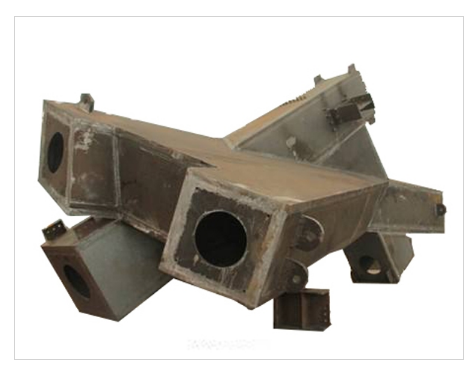ADD:
China-ASEAN Youth Industrial Park, Quli Town, Fusui County, Chongzuo City, Guangxi ,China PRC
TEL:
+86 771 7685530
+86 771 5878305
FAX:
+86 771 5878305
Company registration place and main production base:
Guangxi China-ASEAN Youth Industrial Park
TEL: +86 771 7685530
URL: en.gxmggg.com
The purpose of post-weld heat treatment of steel structure
The post-weld heat treatment of steel structures in Guangxi has three purposes: eliminating hydrogen, eliminating welding stress, and improving the welded structure and overall performance.
Post-welding hydrogen elimination treatment refers to the low-temperature heat treatment performed after the welding is completed, when the weld has not been cooled to below 100°C, and is generally specified as heating to 200-350°C and holding for 2-6 hours. The main function of post-welding hydrogen elimination treatment is to accelerate the escape of hydrogen in the weld and heat-affected zone, which is extremely effective in preventing weld cracks in the welding process of low-alloy steel.
In the welding process, due to the unevenness of heating and cooling, as well as the constraints or additional constraints of the components themselves, welding stress will always be generated in the components after the welding work is completed. The existence of welding stress in the component will reduce the actual bearing capacity of the welded joint area and produce plastic deformation. In severe cases, components may be damaged.

The stress relief heat treatment is to reduce the yield strength of the welded parts at high temperatures and achieve the purpose of alleviating the welding stress. There are two commonly used methods: one is the overall high temperature tempering, that is, the entire weldment is placed in a heating furnace, slowly heated to a certain temperature, and then kept for a period of time, and cooled in the air or in the furnace. This can eliminate 80%-90% of the welding stress. Another method is local high temperature tempering, that is, only heating the weld and its nearby area, and then slowly cooling to reduce the welding stress peak, so that the stress distribution is relatively smooth, to achieve the purpose of partially eliminating the welding stress.
After some alloy steel materials are welded, their welded joints will produce hardened structures, thereby reducing the mechanical properties of the materials. In addition, this hardened structure may cause damage to the joint under welding stress and hydrogen. After heat treatment, the metallographic structure of the joint is improved, and the plasticity and toughness of the welded joint are improved, thereby improving the comprehensive mechanical properties of the welded joint.

Guangxi steel structure processing prompt content source network, if there is any infringement, please contact the administrator to delete, thank you!